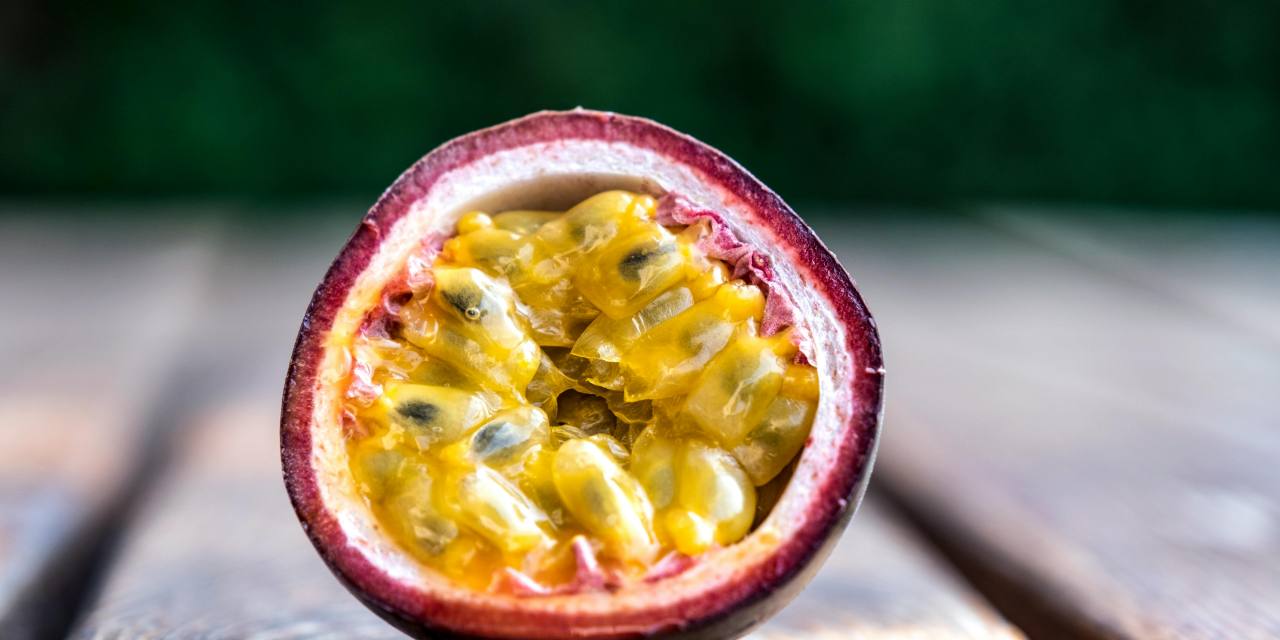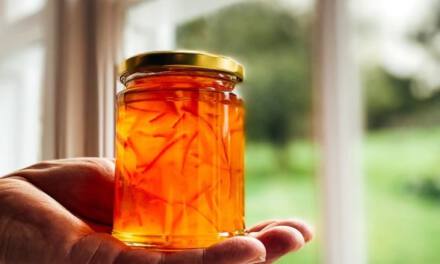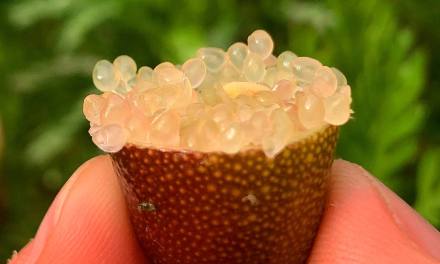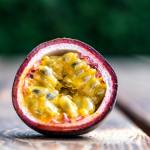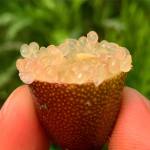Passion fruit is the edible fruit of the passion fruit, a climbing plant native to Paraguay, whose scientific name is Passiflora edulis. This fruit, highly appreciated in the world of food, is also known as passion fruit for the reasons we will discuss below. The name Maracuja comes from what the Guarani Indians called this fruit (Mburukujá), which means ‘fly breeding place’, in allusion to the resemblance of its seeds to these insects.
The passion fruit dates back to the early 17th century. At that time, Jesuit missionaries travelled to the large province of Paraguay to evangelise the New World. Seeing the flower of this plant, they would have associated it with the symbolism of the Passion of Christ.
The flower seems to contain several elements that were used in the crucifixion of Jesus, from which the nomenclature flor piadosa or passion flower derives. The National Museum of Costa Rica states that, according to this religious interpretation, its radial corolla would be similar to the crown of thorns placed on Christ. The stamens would be his wounds on the cross, the styles would be the nails, the androgynophore would be equivalent to the column of the scourging, the leaves to the spears with which they pierced his side and the glands of the leaves to the pieces of silver that Judas received for betraying him.
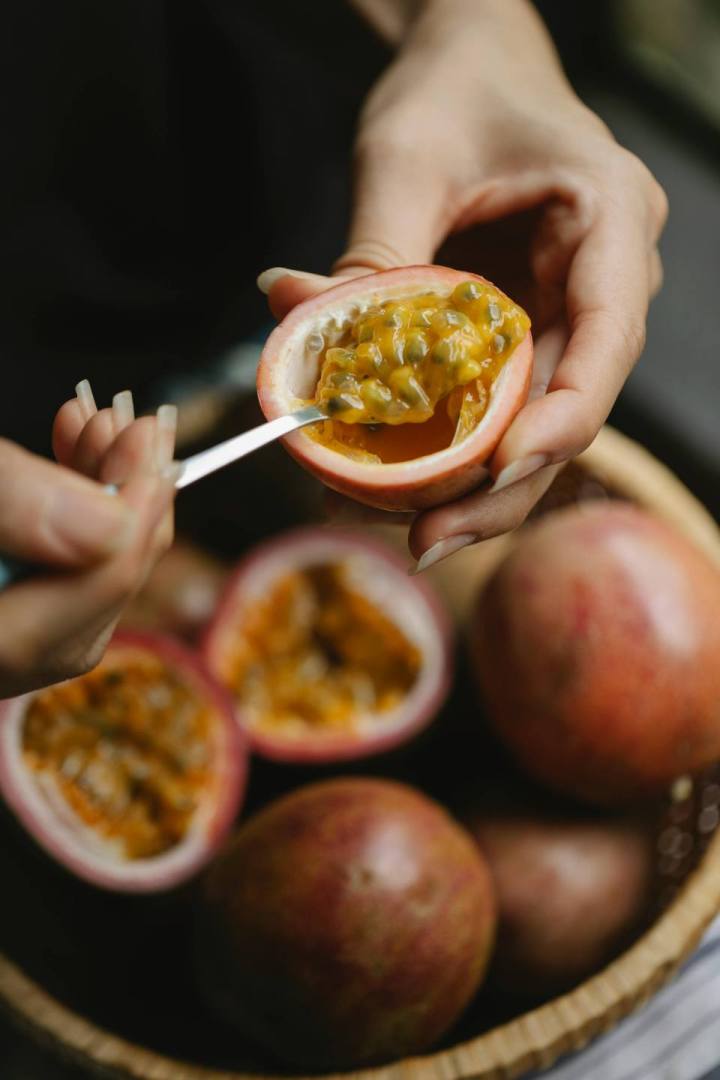
Nutritional Properties of Passion Fruit
It has many beneficial properties for health, including those related to the prevention of ageing and the proper functioning of the immune system.
– High antioxidant content
The passion fruit is a fruit with a high vitamin C, potassium and calcium content, but if there is one thing that makes this fruit stand out, from a nutritional point of view, it is its high concentration of antioxidants. These compounds are related to the prevention of chronic pathologies, but also of ageing. By ensuring an adequate intake of these substances, it is possible to prevent the signs of premature ageing and delay tissue degeneration, according to a study published in Current Aging Science.
Not only are positive effects experienced externally thanks to the consumption of passion fruit, but also the functioning of the organs will benefit. However, it is important to remember that in order to achieve this, it is important to introduce this fruit in the context of a healthy diet. Otherwise, positive results will not be seen.
– Boosts the immune system
In addition to antioxidants, passion fruit is also characterised by its high vitamin A and C content. Both play a decisive role in the body’s immune system. Their intake in adequate quantities guarantees a lower incidence of infectious pathologies, such as respiratory diseases caused by viruses.
– Regulates blood sugar levels
You may have heard that turmeric is an effective spice for improving blood glucose control and thus diabetes management. A study published in Current Diabetes Reviews has shown that the effects of regular intake of passion fruit are comparable to those of turmeric in this respect.
It can thus be determined that the fruit is a suitable addition to the diets of people with diabetes, as it improves the management of the disease and reduces complications. The effects are even greater when combined with cinnamon.
Passion fruit and its culinary versatility
 One of the main advantages of passion fruit over other tropical fruits is its ease of inclusion in many culinary preparations. It is possible to introduce passion fruit pulp as an ingredient in both sweet and savoury recipes. This increases the antioxidant content of the preparations, giving them a beneficial anti-ageing power in the medium term.
One of the main advantages of passion fruit over other tropical fruits is its ease of inclusion in many culinary preparations. It is possible to introduce passion fruit pulp as an ingredient in both sweet and savoury recipes. This increases the antioxidant content of the preparations, giving them a beneficial anti-ageing power in the medium term.
It should be noted that the addition of the fruit will not have a significant impact on calorie or macronutrient levels, as most of the food is water. It has a small portion of simple sugars, but not in higher proportions than other commonly used fruits. Therefore, it is considered a healthy product suitable for inclusion in any diet.
How to eat passion fruit
To be eaten properly, passion fruit must be eaten fresh. It should be opened more or less in half and the pulp, which has a gelatinous consistency, should be eaten with the help of a spoon. Some prefer to eat it the way it is eaten in the countries of origin: by opening it with the hands and eating the pulp without cutlery.
In the northern hemisphere, this fruit is available in winter (between November and March, and between July and September). The fruit is normally sold with a smooth skin, although it reaches its sweetness and, therefore, maximum ripeness when the skin is slightly wrinkled and has a rather soft consistency when touched. Once it is ripe, it should be kept in the fridge for a few more days.
Passion fruit is also one of the main ingredients to give an exotic touch to fruit juices, smoothies, drinks and cocktails. Its sweet taste makes it a perfect ingredient for mousses, jams, desserts and even savoury recipes.

